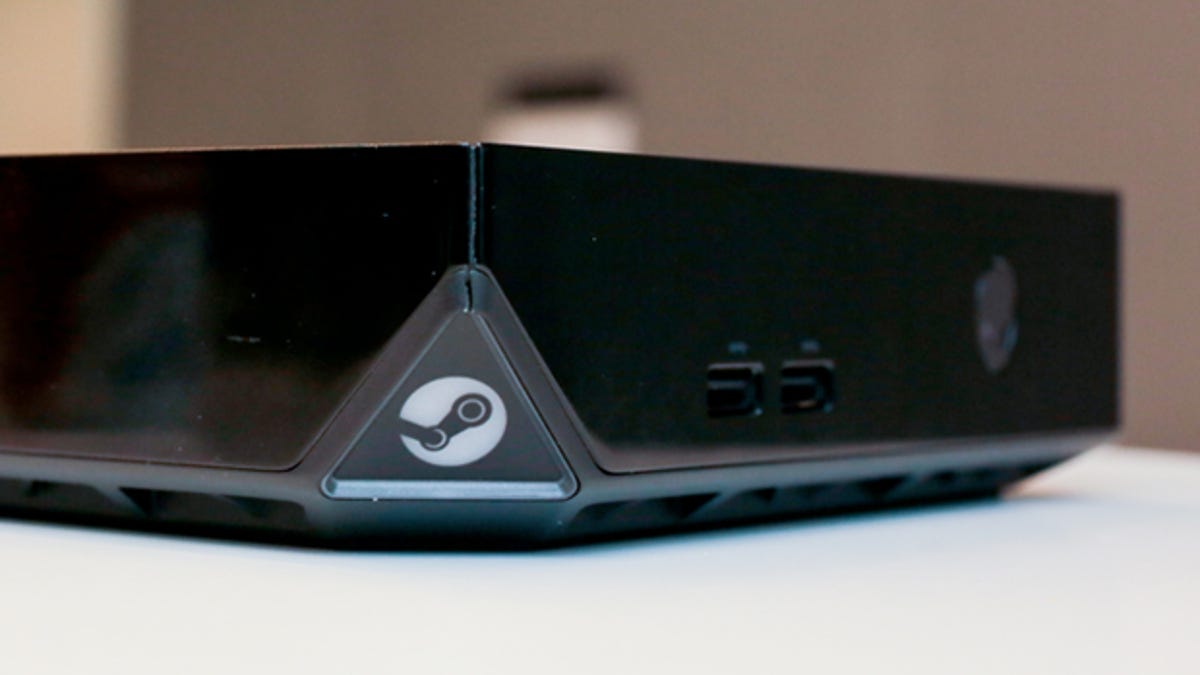Steam Machines and SteamOS: Everything you need to know
Is Valve's big push the next step in PC gaming, or another microconsole white elephant?

Even after its big CES 2014 unveiling, Valve's new Steam Machine platform is something of a mystery. Release dates, game libraries, exact hardware specs, and other details have not been announced, but we do know the initial list of hardware partners and many of the platform's broad strokes.
Based on information released by Valve, as well as our own conversations with several hardware partners, this is the current state of the Steam Machine ecosystem. We'll update this story with new details as we get them.
SteamOS is just for running the Steam app and games
The SteamOS is similar to Google's Chrome OS, in that it's Linux-based and exists primarily to run a specific software app. Instead of the Chrome Web browser, SteamOS runs the Steam online games store, and the games that can be downloaded through it. For PC gamers, the current Steam online store and app are invaluable resources, offering easy game distribution and installation on systems that run Windows, OS X, and even Linux, and Valve hopes to bring that same ease of use to the living room.
It's built for the '10-foot' experience
Valve launched a "big picture" mode for the PC version of Steam last year, reimagining the icons and navigation for use on a 50-inch or larger living-room TV. That's a natural match for a console-like device designed for living-room use.
Valve may be making its own Steam Machine hardware
At CES 2014, Valve CEO Gabe Newell said the company had not definitely decided against selling its own hardware -- after all, Valve has already distributed hundreds of beta units to hand-selected testers.
Then again, it may not
However, the primary focus of the Steam Machine project right now is to encourage and promote hardware built and sold by third parties. At CES 2014, 13 hardware partners were announced, from Alienware to Origin PC, each with a different take on the concept.
Some Steam Machine systems will run only SteamOS and cost about the same as a living-room console
Steam Machines that run SteamOS only, via less powerful "system-on-a-chip"-style hardware designed to output SteamOS games at 1080p, should cost about as much as the new PlayStation 4 or Xbox One consoles, or about $400-$500.
More ambitious Steam Machines dual-boot into Windows and can cost thousands
Most of the initial batch of Steam Machines spotted at CES 2014 were essentially small gaming PCs, from companies including Falcon Northwest, Maingear, and iBuyPower. Many of these units will be customizable, with high-end CPUs and GPUs. They'll boot into both SteamOS and Windows, and cost as much as a comparable Windows gaming PC.
The new Steam Controller is the real game-changer here
The controller looks like a standard gamepad, but trades the analog sticks for concave haptic feedback pads, tilted away from the player for better ergonomics. It also includes 16 buttons or triggers, but a central touch pad proposed in earlier prototypes has been replaced by more buttons. In our brief hands-on time with a Steam Controller, it feels like it has very strong potential to work better in first-person shooters and action games than the standard Xbox gamepad often used in PC gaming. For now, Valve plans to produce the controller hardware itself, and eventually sell it separately to PC gamers, besides initially bundling one in with every Steam Machine.
The controller is designed to work more like a keyboard and mouse
The touch control zones on the Steam Controller can also be reassigned on a game-by-game basis. For example, they can be programmed to easily scroll through a map in a real-time or turn-based strategy game, for which a keyboard and mouse is a better solution than an Xbox gamepad. The full extent of its support will be determined on a game-by-game basis.
Not all Steam games will run natively on SteamOS
One of the reasons you see such a wide variety of Steam Machine hardware is that only a smaller subset of games run natively on the SteamOS. Valve says that number stands at around 250 right now, and is growing. Game developers and publishers essentially have to port their games to SteamOS, much as they would to OS X or Xbox One. That means many of the more high-profile games (for example, Call of Duty: Ghosts), won't play out of the box on a pure Steam Machine.
You'll need a workaround to play non-SteamOS games on some Steam Machines
But, there is a workaround, and one that will probably be important to systems such as the Alienware Steam Machine, which is not a standard Windows gaming rig. Much like last year's Nvidia Shield handheld console, a Steam Machine will be able to stream live gameplay from a standard gaming PC elsewhere on your home network (for example, in your bedroom or den), letting you play the game on your living-room TV with the Steam Controller. Yes, that does sort of defeat the purpose of having an alternative way to play PC games, but at least you won't have to drag a giant gaming PC into the living room and plug it into your TV via HDMI.
For now, only hand-picked Valve beta testers can get a Steam Machine
An initial group of beta testers were selected by Valve to receive demo hardware at the end of 2013. For everyone else, you'll have to wait until Valve gives its hardware partners the green light to start selling hardware to the public. We've heard dates from mid-to-late 2014 for that, which is dependent on Valve completing work on both its OS and the Steam Controller.

